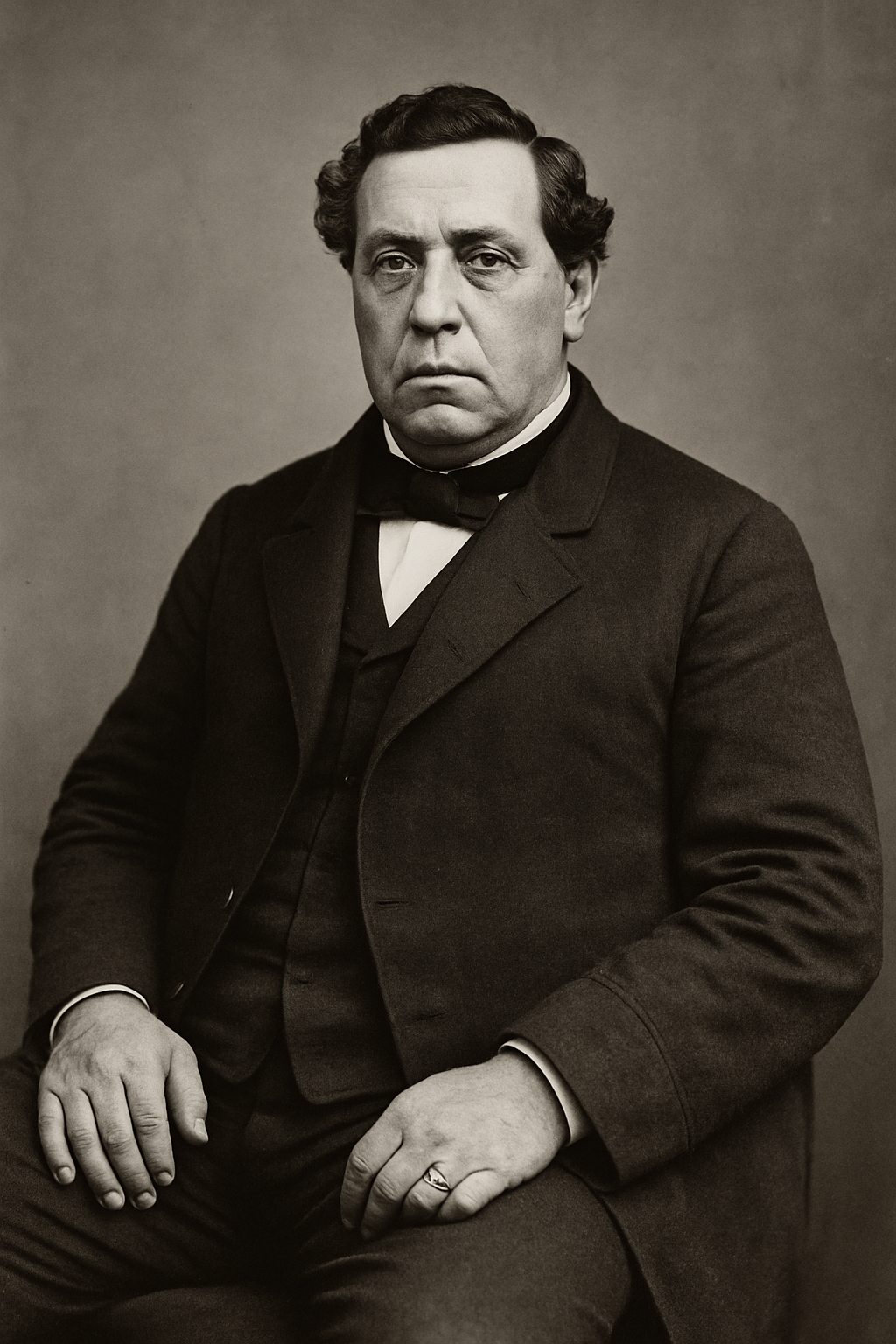



Walk through the small coastal town of Bandon, Oregon, and you’ll hear the name Bennett spoken with casual familiarity—Lord Bennett Inn, Lord Bennett Trail, or simply “the man who named the town.” But behind the placename is a story of transatlantic migration, maritime ambition, and cultural transplantation. George Bennett was not just the founder of Bandon, Oregon—he was a man shaped by the 19th-century Irish diaspora, driven by both hardship and hope.
Though not a “lord” by British aristocratic standards (a misconception likely carried by title conventions of the time), George Bennett was a proud son of Bandon, County Cork, Ireland—a Protestant settler town known for its strategic location along the River Bandon. When he arrived in Oregon in the mid-19th century, he brought more than possessions—he brought a name, a sensibility, and a dream to build anew.
George Bennett was born in Ireland during a time of profound social and economic tension. The early 1800s were marked by waves of rural displacement, religious divides, and—by mid-century—the Great Famine. While it's unclear exactly when he emigrated, Bennett was part of a growing movement of Irish who fled a struggling homeland in search of land and opportunity.
By the early 1870s, he had reached the southern coast of Oregon, a rugged stretch of untamed cliffs, dense forests, and roaring rivers. The Coquille River, with its sheltered estuary and rich timberland, presented a strategic location for settlement and trade.
In 1873, George Bennett formally platted the townsite at the mouth of the Coquille River and named it Bandon, in homage to his hometown in County Cork. In doing so, he joined a long lineage of emigrants who sought to recreate home on new soil—bridging identity, nostalgia, and ambition in a single act of naming.
The Bandon that George Bennett founded was a far cry from today’s tourist-friendly town. It was remote, wild, and largely uncolonized by settlers. The indigenous Nasomah Band of the Coquille Tribe had lived in the region for millennia, building villages along the estuary and practicing a subsistence lifestyle based on salmon, shellfish, camas, and cedar.
Following the tragic Nasomah Massacre of 1854, tribal presence in the area was forcibly diminished. By the time Bennett arrived two decades later, the land was largely under settler control—though its indigenous roots and wounds remained.
Bennett, like many European settlers of the era, saw the potential for a commercial port town. The Coquille River was a natural entryway for shipping lumber and fish. The surrounding forests promised raw materials. The soil, while sandy, offered agricultural potential if tamed. His town would be one of rugged opportunity—an outpost for resource extraction, trade, and cultural imprint.
One of the most enduring and controversial aspects of George Bennett’s legacy was his introduction of gorse to the Oregon Coast.
A spiny, fast-growing shrub native to Western Europe, gorse was common in Bennett’s native County Cork. Legend has it that he brought gorse seeds to Oregon out of homesickness, hoping to beautify the dunes and hillsides of his new home. The plant thrived—far too well.
Gorse quickly spread across the sandy soils of Bandon, forming dense, impenetrable thickets with high oil content. By the early 20th century, it was a recognized fire hazard and ecological threat.
That threat became reality in 1936, when a gorse-fed wildfire engulfed the entire town of Bandon. The inferno destroyed over 200 structures and killed at least 10 people. Though George Bennett had died decades earlier, his name remained entangled in both the founding and the burning of Bandon.
To this day, gorse remains a cautionary symbol—an invasive legacy rooted in sentiment, but laden with unintended consequence.
George Bennett’s decision to name the town Bandon was more than a nostalgic nod. It was a cultural claim. By aligning this Oregon settlement with an Irish city, he imbued it with transatlantic resonance—a kind of spiritual twinship between two river towns across the world.
Bandon, Ireland, was known for its Protestant stronghold, its wool trade, and its British loyalism during a time of Catholic oppression. In contrast, Bandon, Oregon, would evolve into a pluralistic coastal village—home to loggers, fishermen, Native American survivors, artists, and immigrants.
Still, the name Bandon carried weight. It suggested order, legacy, and a kind of European sensibility on the edge of the Pacific frontier. In time, the town would become a melting pot of Anglo, Irish, and regional identities—but it began with Bennett’s symbolic act of place-making.
George Bennett lived to see Bandon take shape. He served in civic roles and advocated for infrastructure that would improve river access and settlement viability. But like many town founders of the West, his life eventually faded into the backdrop of the place he helped create.
He died in the late 1800s, remembered locally but not widely documented. His grave, if it still exists, is a quiet reminder of a man whose name remains etched into the maps, but whose personal story often slips between the lines of local history.
In recent years, Bandon has begun to reflect more intentionally on its layered past—including its indigenous roots, fire-scarred chapters, and immigrant founders. George Bennett is no longer seen solely as a heroic settler, but as a complex figure: visionary, nostalgic, and human—whose decisions shaped not just a town, but its ecological and cultural trajectory.
Today, Bandon is a blend of old and new. Its golf resorts attract global travelers. Its Old Town boardwalk hosts artisan markets and crab shacks. Its beaches inspire painters and storm-watchers. And nestled above the cliffs are signs—like the Lord Bennett Inn—that quietly gesture to the town’s Irish namesake.
Whether called “Lord” as a colloquial honorific or as a misunderstood title, George Bennett’s imprint is undeniable. His name remains tied to a coastal experiment in community-making—a place where memory, migration, and landscape converged.
And though the town has grown far beyond his original plat map, it continues to embody the paradox of his legacy: beauty and danger, nostalgia and change, rootedness and reinvention.
George Bennett did not build Bandon with stone walls or sprawling estates. He built it with a name, a vision, and a willingness to transplant identity across an ocean. In doing so, he joined a long tradition of emigrants who saw in America not just escape, but a canvas.
Bandon, Oregon, was his canvas.
And today, long after his death, that town still wrestles with the gifts and ghosts of its founding—from the gorse he planted to the river he settled, from the name he borrowed to the land he changed.
To remember George Bennett is to remember that every town has a story. And every story begins with someone imagining that it could be more than just land—it could be home.
***
Perk Development is an aspirational real estate development firm that specializes in land enhancement and community restoration in coastal and mountain destinations across the Western United States.
To inquire about upcoming investment & sales opportunities, please email info@perkdevelopment.com.